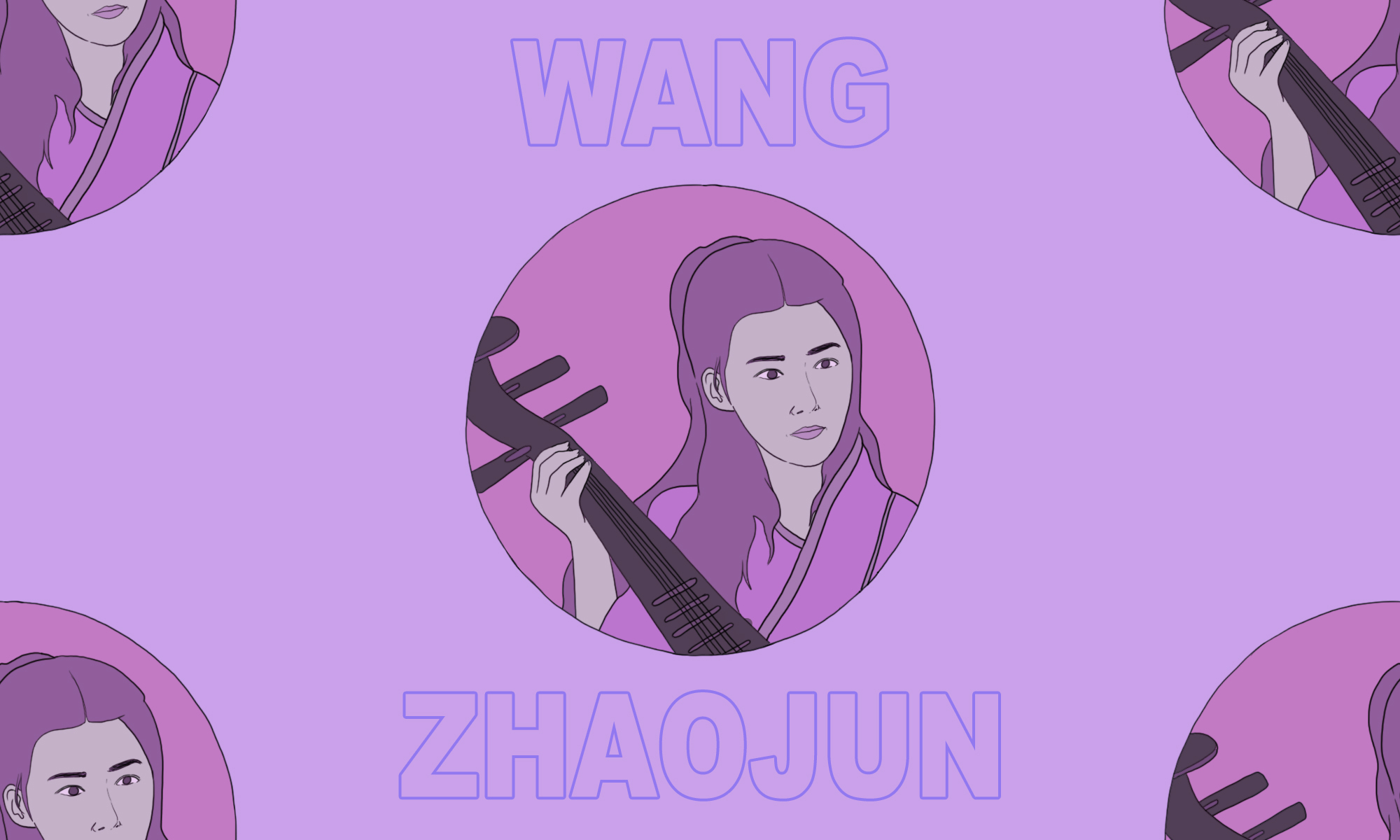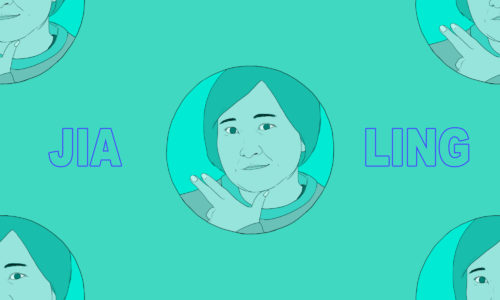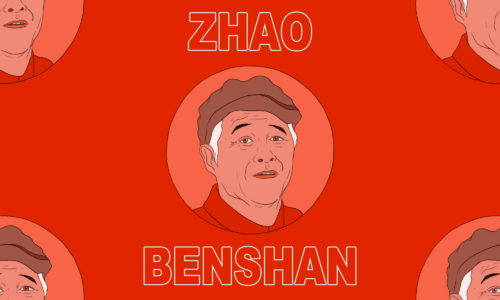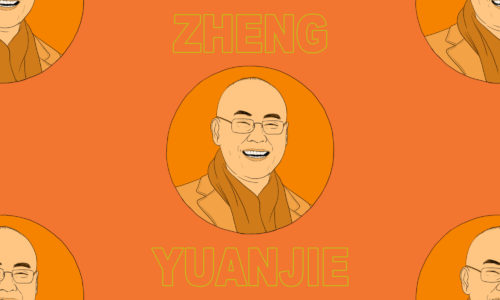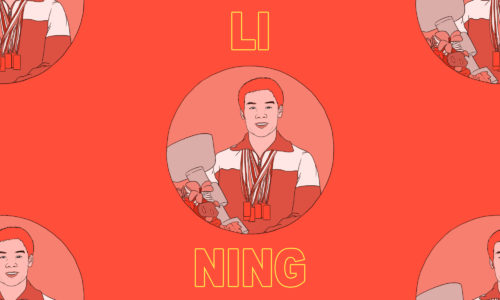Imagine a woman bedecked in elaborate headdress and densely-embroidered finery, traveling through the desert (perhaps the Gobi, or maybe the Taklamakan) under a boiling sun, a long-necked pipa (or lute) cradled in her arms. Tang dynasty poet Bái Jūyì 白居易 imagined the harsh environment ravaging the delicate beauty of this Han lady far from the big city: “Full in her face, barbarian sands, wind full in her hair; / gone from eyebrows, the last traces of kohl, gone the rouge from her cheeks: / hardship and grieving have wasted it away — now indeed it is the face in the painting!”
Wáng Zhāojūn 王昭君 had been shipped off as a peace bride, rejected by the emperor because he thought her portrait was unflattering. But her painter had been devious, and the emperor had been tricked: Wang Zhaojun was in fact the fairest in his seraglio. A tragedy indeed for such a beauty to be wasted in the tough world of yaks and yurts beyond the Great Wall, appreciated by none but barbarian horsemen. Jin dynasty poet Shí Chóng 石崇 imagines her seeing the irony: “Long ago I was a jewel stored in a box, / now a blossom stuck in the muck and mire.”
Initially just a mere pawn in the power plays between the Xiongnu and the Han dynasty, then a celebrated damsel-in-distress in imperial China, but by the 20th century Zhao would turn into something else altogether: a powerful voice of female agency, but also a convenient symbol for cultural unity.
Who is Wang Zhaojun?
A legend known by everyone in China, written about by every poet worth the name, including Lǐ Bái 李白 and Dù Fǔ 杜甫. A desert flower, hailed as one of the four beauties of ancient China. But in contrast to Yáng Guìfēi 杨贵妃, she served an emperor who (according to legend) neglected her, to the point of being given away as part of a peace marriage to a chief of the fragmenting Xiongnu in modern-day Mongolia.
The earliest record of her is little to go on. The dusty annals of the Han Shu (written less than a century after her time) tell us that in 33 B.C. a certain Wang Zhaojun, a lady-in-waiting in the palace of the Emperor Yuan in the Western Han dynasty, was sent away to be married to Huhanye, a Chanyu (or “khan”) of the Xiongnu. She wasn’t royal, just “a girl from a family of blameless reputation.” When Huhanye died three years later, she was then remarried to the dead khan’s eldest son — as was traditional with the Xiongnu. We don’t know what she made of this decidedly un-Confucian marital custom (but the less reliable Hou Han Shu says she requested permission to return to the Han capital, but was refused). In total, she had three children, one of whom (Princess Yun) became an influential lady-in-waiting at the Han court, in cahoots with the trouble-making Wáng Mǎng 王莽. When Wang Mang (a minister who usurped the throne) tried to split the Xiongnu, Yun’s sons served as tribute-bearers between Xiongnu and Han.
She had taken part in the well-trodden route of heqin — “peace marriages” — long practiced by the Han dynasty by marrying women of the royal family into the houses of neighboring kingdoms. The Xiongnu were always skulking on the northern borders, probing for weakness but ultimately in their death throes, losing in a war that had been fought on and off for a century. In Wang’s time the Xiongnu had fallen apart into infighting clans, and Huhanye hoped he could make an ally with his old enemy to the south by becoming a vassal king. He visited the Han court three times over the course of 18 years, the final time asking to be bonded in kinship with the Han.
That the emperor offered him a non-royal bride is intriguing. By the time of the Eastern Han, two songs had been written about Wang, adorning her story with extra details that gave her a sense of humanity. The Xijing zaji (Miscellaneous Records of the Former Han, a collection of semi-fictional short stories from the Eastern Han about the former Western Han) said she’d been neglected at court, a great beauty who’d never seen the emperor, as she’d virtuously refused to pay the slimy painter Máo Yánshòu 毛延壽 to paint her pretty (as all the other women at court had done). He painted her plainly, so the emperor was unaware of the great beauty hidden away in a distant palace courtyard.
As to what happened after the Xiongnu chief asked for a bride, versions differ. According to the Qin cao (“Tunes for the Qin”), Wang volunteered herself out of frustration at her boring life. But the more famous tale comes from the Xijing zaji, which says the emperor picked the plainest of his harem, only realizing his mistake when Wang arrived in his presence for the first time. The chief (clearly a red-blooded man) was supposedly delighted with his bride-to-be, and the emperor — no doubt grinding his teeth — had no choice but to give his blessing. The painter was executed once Huhanye was safely on the road.
By the time of Jin dynasty poet Shi Chong, the pipa had been added to Wang Zhaojun’s story, played by attendants on her journey to prevent her from becoming homesick. Nowadays, Wang’s pipa is as essential to her image as the bow and arrow is to Robin Hood’s. Legends started making her play it herself, a fragment of home in the wasteland and a way to communicate her feelings to a people she couldn’t understand.
The tragic struggles of a great lady inspired literati poets. Some — like Bai Juyi — saw her as on a noble peace mission, sacrificing comfort and friends for the peace of the kingdom. She laments her fate in the Wang Zhaojun Bianwen of the Tang dynasty (found in the 20th century in a cave in Dunhuang): “The fragrance of my clothes, through the long trip, is blown away; / And my red slippers, after the arduous journey, are worn clear through. / …. / My head aches: how I hate yak milk and sheep smell.” Female Qing poet Guō Shùyù 郭漱玉 admired her peacekeeping powers, how one woman was more effective than an army: “Better by far than sending forth troops, / By the thousands, to guard the frontier.”
But others thought she was lucky to have escaped the Han court. Song dynasty poet and unorthodox minister Wáng Ānshí 王安石 scandalously imagined her playing her pipa and sipping wine while turning the heads of passing tribesmen: “Han’s favor is shallow and the barbarian’s deep; / The joy of life is to be with your heart to heart intimate.” What difference did civilization or barbarism make, provided you were happy? It undermined Confucian ideals of duty and virtue — Song scholar Luō Dàjīng 罗大经 said Wang’s lines were “a violation of reason and a blow to morality,” encouraging ministers to betray emperors and wives their husbands.
She also had a place in popular myth outside of the scholar’s ivory tower — a Song play by Mǎ Zhìyuǎn 马致远 had her discovered by the emperor in his palace, enticed by her pipa’s sweet tones. But she’s married off by force to the evil Xiongnu chief, who threatens invasion unless he is given Wang.
A rise in surviving female poetry by the time of the Ming allows for a more feminine take on Wang’s hard luck. Huáng Yòuzǎo 黄幼藻 imagined her grumbling, “Had I known a painting would wrong this body, / I’d have settled for marriage to a commoner from Shamanka Mountain.” Fellow Ming poet Xú Déyīn 徐德音 relished that, “In the end, it was wives who made peace with the western tribes.”
Still serving
By the 20th century, Wang Zhaojun’s potential as a force for female empowerment had gone mainstream. A young Hú Shì 胡适 in 1908 wrote an essay arguing she was “a patriotic heroine.” Guō Mòruò’s 郭沫若 1923 opera Wang Zhaojun has her roasting the emperor in a way that would have made Confucius foam at the mouth:
You have the power to make people live and die. Today, not desiring me, you send me to the desert. Tomorrow, desiring me, you use me for your lust, and send the women you do not desire to the desert. You know that those sent to the desert suffer; but do you know that they also suffer who are used by you? What makes you so different that you alone can harass and threaten thousands? You are ugly; you should know that you are ugly. Wolves are not as ugly as you; the palace you live in smells bloodier than a wolves’ den.
Today she’s recruited by the state as an agent for national unity. In the 1950s, the PRC policy was to encourage ethnic mixing, but Han women didn’t want to marry men from far-flung and foreign Inner Mongolia. In 1960 Zhōu Ēnlái 周恩来 commissioned the celebrated playwright Cáo Yú 曹禺 to write on this theme, telling him the story must encourage “Chinese women to marry national minorities.” When it was finally performed in 1979 (Cao somehow surviving the Cultural Revolution), Wang slid easily into Mongol life and culture, leading women into battle to defend her husband. The two were a loving couple filled with mutual admiration for each other, symbolic of Huhanye’s insistence that “the Hans and the Huns are one family forever for generation after generation.”
This is still the state’s line on her: The “Zhaojun Culture Festival” has happened every golden week since 1999, with China Daily seeing her as a “symbol of harmony among China’s ethnic groups.” 2020’s offering of “promoting national unity” in her name included a mass marriage in the grasslands, Mongolian food and ethnic costume, and a lot of Mandarin.
Both Cao’s play and state propaganda emphasize a story of Wang bravely volunteering to go on a peace mission, promoting good relations between the Han and the Xiongnu. That means downplaying Wang’s traditional story of suffering (still mainstream today) and its tragic ending. The Qin cao has her take poison rather than marry her own biological son. The Wang Zhaojun Bianwen has her waste away with grief at being “married off to this desolate place.”
But she’ll be forever preserved for posterity. According to legend, she’s buried in a tomb near Hohhot, upon which the Qin cao says the grass grew forever green, standing out for miles against the dry white grass of the plains.
Chinese Lives is a weekly series.
